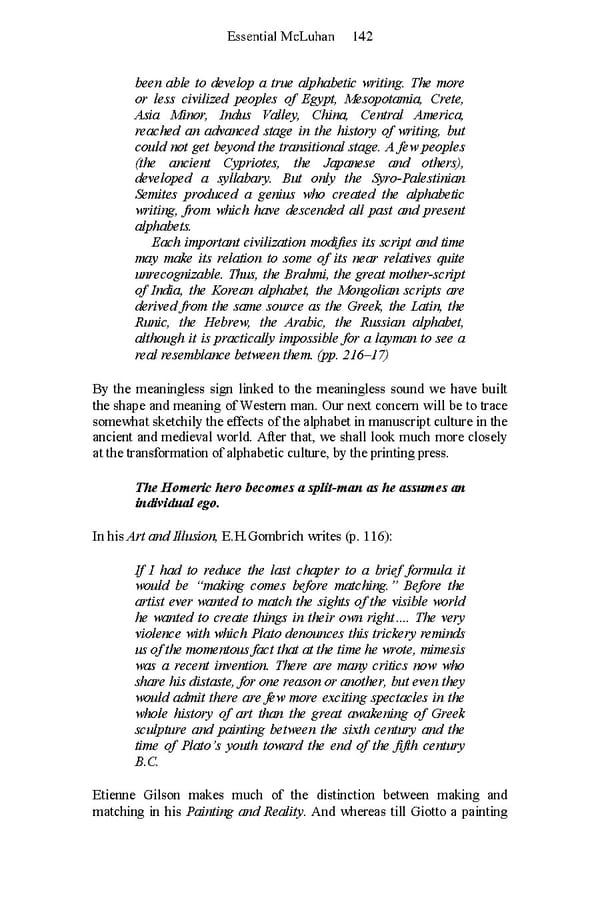Essential McLuhan 142 been able to develop a true alphabetic writing. The more or less civilized peoples of Egypt, Mesopotamia, Crete, Asia Minor, Indus Valley, China, Central America, reached an advanced stage in the history of writing, but could not get beyond the transitional stage. A few peoples (the ancient Cypriotes, the Japanese and others), developed a syllabary. But only the Syro-Palestinian Semites produced a genius who created the alphabetic writing, from which have descended all past and present alphabets. Each important civilization modifies its script and time may make its relation to some of its near relatives quite unrecognizable. Thus, the Brahmi, the great mother-script of India, the Korean alphabet, the Mongolian scripts are derived from the same source as the Greek, the Latin, the Runic, the Hebrew, the Arabic, the Russian alphabet, although it is practically impossible for a layman to see a real resemblance between them. (pp. 216–17) By the meaningless sign linked to the meaningless sound we have built the shape and meaning of Western man. Our next concern will be to trace somewhat sketchily the effects of the alphabet in manuscript culture in the ancient and medieval world. After that, we shall look much more closely at the transformation of alphabetic culture, by the printing press. The Homeric hero becomes a split-man as he assumes an individual ego. In his Art and Illusion, E.H.Gombrich writes (p. 116): If I had to reduce the last chapter to a brief formula it would be “making comes before matching.” Before the artist ever wanted to match the sights of the visible world he wanted to create things in their own right…. The very violence with which Plato denounces this trickery reminds us of the momentous fact that at the time he wrote, mimesis was a recent invention. There are many critics now who share his distaste, for one reason or another, but even they would admit there are few more exciting spectacles in the whole history of art than the great awakening of Greek sculpture and painting between the sixth century and the time of Plato’s youth toward the end of the fifth century B.C. Etienne Gilson makes much of the distinction between making and matching in his Painting and Reality. And whereas till Giotto a painting
 Essential McLuhan Page 148 Page 150
Essential McLuhan Page 148 Page 150